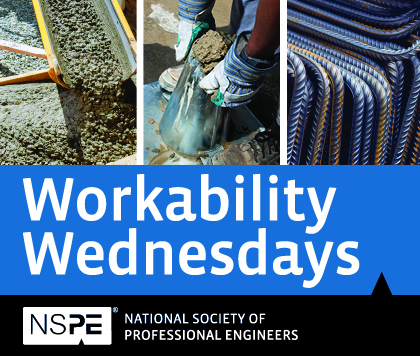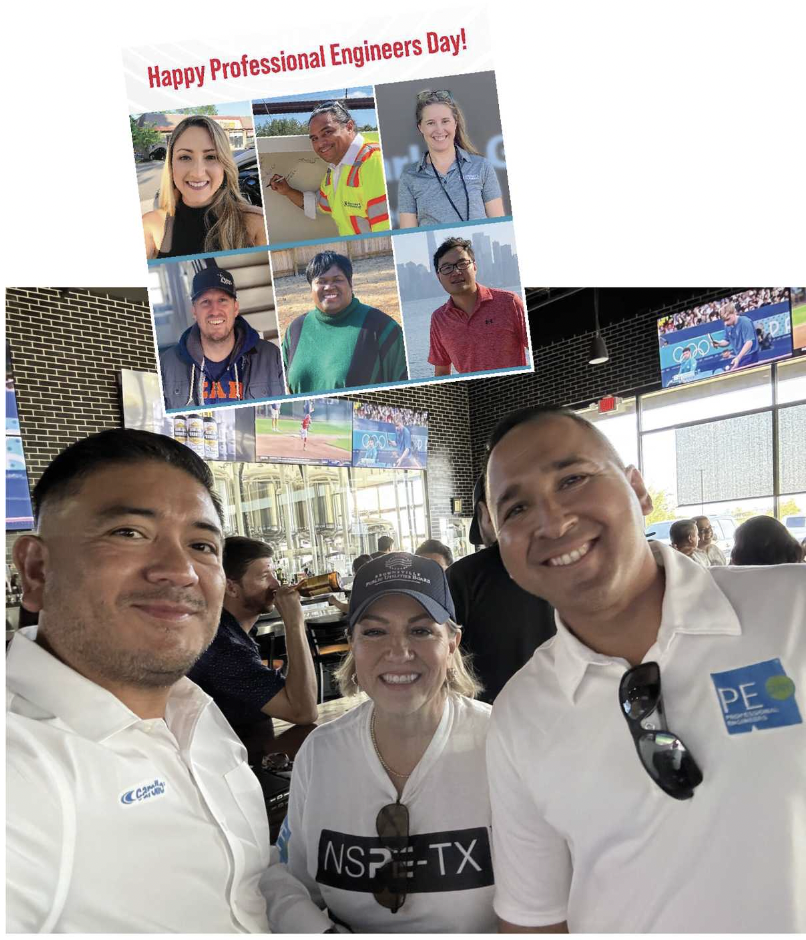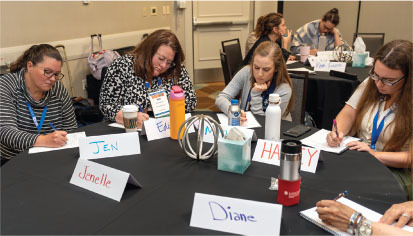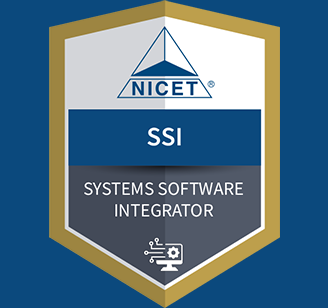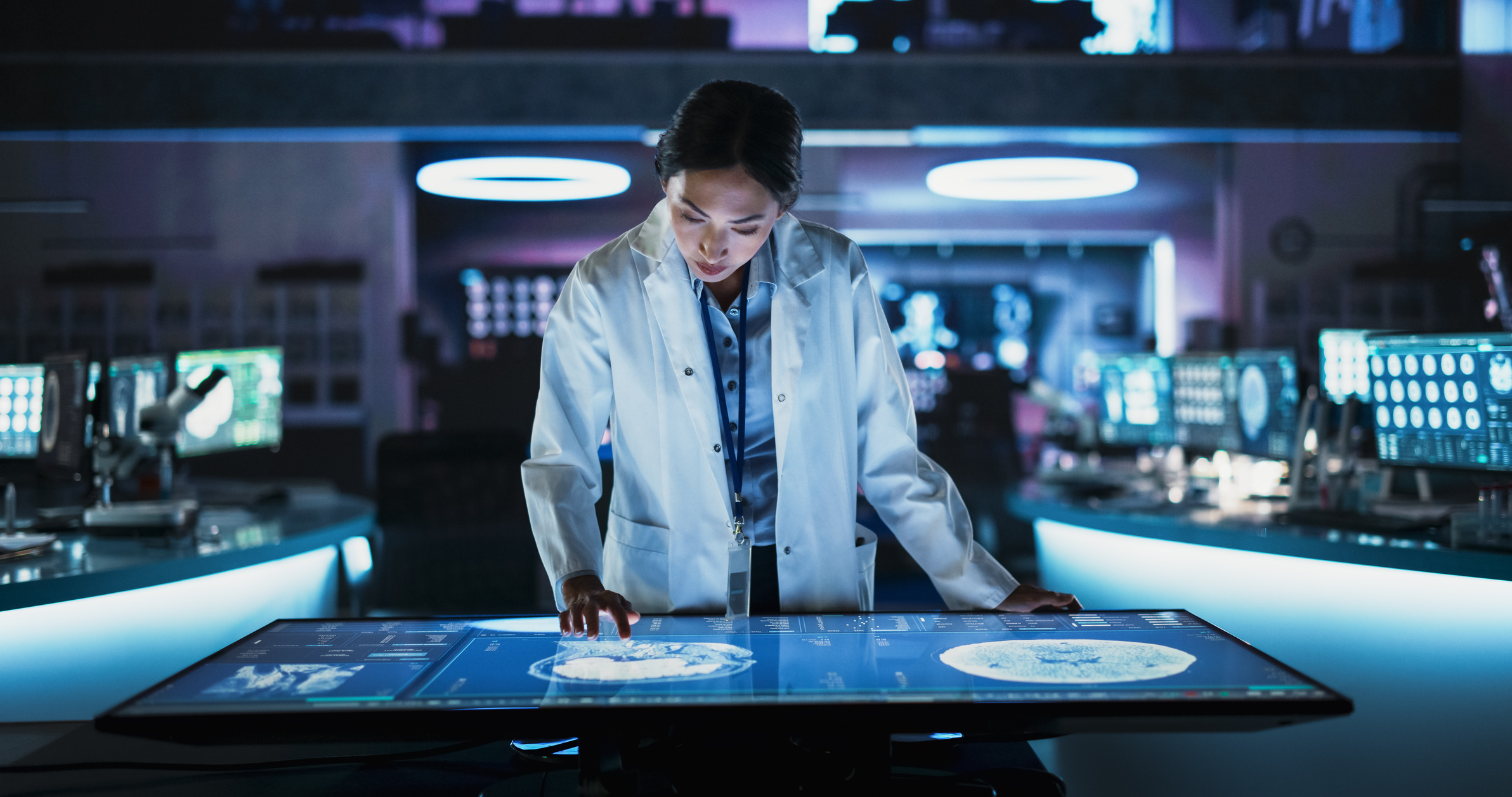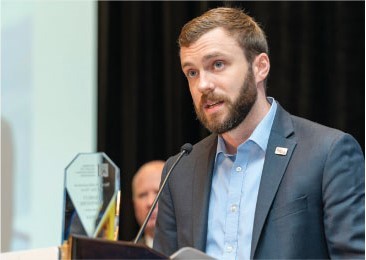Issue 3 2024
A Noteworthy Discussion on Inclusion
By Richard B. Easley, E.I.T., CAPP
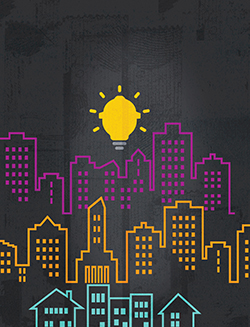 The NSPE Diversity, Equity, and Inclusion Advisory Committee conducted a well-attended webinar, DEI or ‘die’ – A Noteworthy Discussion, on June 12, 2024.
The NSPE Diversity, Equity, and Inclusion Advisory Committee conducted a well-attended webinar, DEI or ‘die’ – A Noteworthy Discussion, on June 12, 2024.
The three featured speakers were Rick Guerra, P.E., F.NSPE, Betty Jean Jordan, P.E., F.NSPE, and Britt E. Smith, P.E., F.NSPE. In my capacity as chair of the DEI Advisory Committee, I served as the webinar moderator. Each speaker addressed four questions with answers that reflected their personal experiences and perspectives. Those questions were the following:
- Can you describe an instance where you witnessed a potential work problem that was avoided because there was a diverse/inclusive approach to the situation?
- Do you see any problem with the concept of hiring "The Best?"
- Do you think DEI really impacts equity among the public that we serve? If so, why?
- What can an organization like NSPE do to address the divergence of opinions regarding diversity and inclusion in the organization and the engineering profession?
The answers offered an interesting collection of experiences from a Latino man, a white woman, and a white man. This article will not summarize the answers provided, but it is safe to say that the responses were thoughtful, eye-opening, impactful, and each speaker acknowledged that they were not born with their answers. In fact, most discussed that they have been on a journey of discovery and over time they are "seeing" more of the experiences of people that do not have the same histories and life circumstances as they did. If you did not see this webinar, I strongly urge you to register to watch it through the NSPE PE Institute.
Here’s a situation and question I have presented to numerous audiences: Let’s say that you innocently make a comment or a joke that was so offensive and hurtful to your coworker that they felt that they could no longer work and thrive in that hurtful environment. Would you think that what you said is ok because you didn’t mean anything hurtful or know the pain it caused them? If your answer is "yes," you can stop reading this article at this point. If you thought about it and answered "no" — please read on.
Understanding Different Life Experiences
 I recently had the experience of listening to a peer share his view that some challenges faced by people with different life experiences are petty and insignificant. This revealed to me that some folks truly cannot fathom a life and perspective that is different from their own. In one particular case, at a recent conference, a woman presented a scenario where she and other women felt it is unsafe and untenable to utilize transit under certain conditions. One of these circumstances is during rush hour when transit vehicles are overcrowded. Another circumstance is later in the evening (at night). What became clear from this revelation was that this peer, a white male, could not relate to being groped on a crowded bus or railcar, and also that he has never been concerned about riding transit and getting off or on in unlit areas. He made comments like, "If she just paid attention to her surroundings, she’d have nothing to worry about. There’s really no need for those ‘women only’ rail cars or the expense of lighting up or providing security phones at bus stops." Upon hearing these types of comments, I can only think that we have more work to do in our profession.
I recently had the experience of listening to a peer share his view that some challenges faced by people with different life experiences are petty and insignificant. This revealed to me that some folks truly cannot fathom a life and perspective that is different from their own. In one particular case, at a recent conference, a woman presented a scenario where she and other women felt it is unsafe and untenable to utilize transit under certain conditions. One of these circumstances is during rush hour when transit vehicles are overcrowded. Another circumstance is later in the evening (at night). What became clear from this revelation was that this peer, a white male, could not relate to being groped on a crowded bus or railcar, and also that he has never been concerned about riding transit and getting off or on in unlit areas. He made comments like, "If she just paid attention to her surroundings, she’d have nothing to worry about. There’s really no need for those ‘women only’ rail cars or the expense of lighting up or providing security phones at bus stops." Upon hearing these types of comments, I can only think that we have more work to do in our profession.
I recall having a conversation with another peer about technologies and how often times the benefits are not quite realized the same way for everyone. This man is a good friend, and we have very much in common in our professional lives, definitely mutual admiration. In most of our work, engineers rarely talk about race. We rarely talk about gender. We rarely talk about religion. We rarely talk about many things that make us the wonderful individuals that we are. I know more about being a Black man in America than most people will ever know. Likewise, I will never truly know what it’s like to be a white man or a woman or of a non-Christian religion. I also don’t know what it’s like to be deaf or blind, or reliant on the use of a wheelchair, or autistic. The interesting thing is that as engineers, we plan and make decisions that are for the benefit of all of these groups — groups we admittedly really don’t know much about. It’s literally impossible to fully understand some people that do not have the same issues and challenges as we do.
Viewed as a Threat
I explained to this friend that as a Black man, I am followed around in retail stores, grocery stores, markets, etc. Many times, I can catch the security (often undercover security) following me. It’s always interesting when I’m out shopping with my white friends. They’ll ask me, "Did you see that guy following you everywhere you went?" Sometimes I see them and sometimes I don’t. It’s a fact of life for me as a Black man. I have earned four STEM degrees (one in math and three in engineering). I’m a business owner and have worked in 34 US states and 25 countries. I conduct missionary work in multiple countries on multiple continents. Yet, I am outwardly just a Black man that is viewed as a threat. I live with that.
Let’s consider a common experience of shopping. Have you gone to the store, and upon checkout, were asked if you wanted your receipt printed or emailed? My wife (who is white) is very conscious of wasted paper and chooses email. Have you then been asked if you want a paper or plastic bag for your purchase? My wife chooses not to get a bag to help protect the environment. I explained to my friend that I will ALWAYS print out a receipt and will always take a bag. Why is this the case? For example, if I were to buy a new $900 smartphone and tried to exit the store with that new phone in my hand—no store bag and no receipt—I could be accused of theft. This scenario poses a very real risk that I cannot afford to experience. This is a very different life experience that my white friend never considered, primarily because he never lived that experience. Nor should he, and nor should I. This is just one example, but there are many daily life experiences that are unknown about people we care about and the people we serve in our society. The same stories can be told by women, people of different religions, LGBTQAI+ community members, the mobility impaired, etc.
Another reality I often face is the inability to catch a taxicab. I can try to hail cab after cab, and they just drive right past me. There have been times when a white person has witnessed this scenario and in response have come to my aid by hailing a cab. This allowed me to get in the cab and go where I needed to go. I have always thanked them for their kindness. This happens to Black people all across the country and most white people have no idea that this type of treatment is part of the reality of being Black. I say this because many people don’t know what a godsend the Uber and Lyft technologies have proven to be for me and people that look like me. Drivers have no idea what color my skin is, and they pick up "Richard" in five or less minutes from when I contact them on the app!
Redefining Who is "The Best"
It was once stated by some members of this great organization that the concept of DEI should just d-i-e. It was also stated on the NSPE Communities Open Forum that when you hire "the best," that is all that is required instead of looking at different life experiences and bringing different perspectives to the engineering table. One commenter was so bold as to ask that when you look for a doctor, do you look for diversity or do you look for the doctor that was the best in his/her class? This question implies that it doesn’t matter the sex, the color of skin, the background, or the religion of a doctor — it only matters that they were the best in their class. On the surface, that’s a good argument to make. But I have found that this argument is a very flawed assumption unless you redefine your definition of "the best." Have you ever wondered why many women choose to see a female gynecologist? While they want a good doctor, they insist on a female doctor (regardless of whether a male doctor was the best in his class) because they know a female doctor is more relatable to another woman.
 Have you ever gone to the doctor and had a blood oxygen meter clipped to your finger? I know that I have. Did you know that the blood oxygen concentration (BOC) was one of the indicators for getting a scarce bed and treatment in the hospital during the COVID pandemic? What I learned during that period is that a BOC between 95 and 100 is a healthy number, and a BOC between 90 and 95 is a dangerous value and warranted close observation to see if conditions get worse. A BOC less than 90 is a good indicator of respiratory problems and admittance to the hospital to use a respirator would likely be warranted if there were empty beds. This is what "the best" doctors that made the highest grades in medical school know.
Have you ever gone to the doctor and had a blood oxygen meter clipped to your finger? I know that I have. Did you know that the blood oxygen concentration (BOC) was one of the indicators for getting a scarce bed and treatment in the hospital during the COVID pandemic? What I learned during that period is that a BOC between 95 and 100 is a healthy number, and a BOC between 90 and 95 is a dangerous value and warranted close observation to see if conditions get worse. A BOC less than 90 is a good indicator of respiratory problems and admittance to the hospital to use a respirator would likely be warranted if there were empty beds. This is what "the best" doctors that made the highest grades in medical school know.
During the COVID pandemic, a Black doctor observed that people of color seeking healthcare were not admitted into hospitals because their BOC was not low enough (which could have saved lives). This doctor conducted research and found that the universal BOC meters have a design flaw that elevates the BOC of people of color much higher than their actual blood oxygen levels. Unfortunately, the majority of manufacturers of these sensors provide no warning about this flaw to the institutions using these technologies. In the case of triage, "the best" doctors would have sent those people home instead of recognizing that the BOC levels were artificially inflated.
I am a survivor of a very aggressive prostate cancer. I have found that the race of the doctor is important since prostate cancer affects Black men differently than white men, but the research and the textbooks are almost exclusively written to treat white men. The same thing applies to engineers that can relate to being a woman or engineers that can relate to having a life experience of living beneath the poverty level. An engineer that grew up in, and can relate to, life in the inner city, has a very different perspective than one that grew up in a suburban or high-income neighborhood, or could afford the best schools, or never had to connect with communities that were not mainstream, English speaking, and upper middle class. Those firms with engineers that had diverse life experiences actually had "the best" people. A diversity of life experiences virtually guarantees solutions for all people. There are other examples of how some decisions made by "the best" engineers (and doctors) have led to the unnecessary deaths of people. You’ll learn more about this from the NSPE DEI Advisory Committee in the future.
Continuing on the subject of only hiring "the best" engineers, you probably are not aware that the facial recognition software that is used in airports for security worldwide was developed by people that probably didn’t consider DEI. You probably didn’t know that this prominent international software gives false positives in only 1 in 10,000 cases for white males. That’s not bad if you have the privilege of being a white male. That same software in use today is inaccurate with false positives for 1,000 in 10,000 women of color. That means that 1 in 10 women of color will be treated unfairly! My guess is that those that were involved in the design were probably the best in their class.
Designing for a Diverse
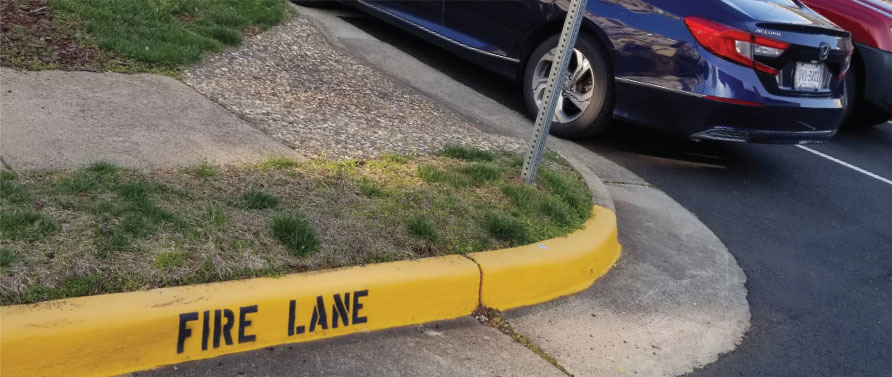 World When I consider the designs that engineers have created and then built, I often like to put on what I call "imaginary DEI glasses." I decided to put on these imaginary glasses while taking a usual four-mile walk that I have taken for more than 20 years with my wife. The first thing that I noticed about a subdivision near my home was the necessary and much appreciated addition of sidewalks with curb laydowns for people using wheelchairs and walkers. I also noticed that a minimum amount of parking spaces was available for the residents of this townhome community. Then I noticed, for the first time, that the sidewalk curb laydowns pointed directly into parking spaces that were filled with cars. I was actually embarrassed for our profession for allowing something like this to be designed and built. How could anyone that is familiar with life in a wheelchair allow this to happen? Instead it seemed to be a case of the following: sidewalk curb laydowns – CHECK, minimum number of parking spaces for the development – CHECK. Those imaginary glasses really put this into focus. I recommend that everyone reading this article try on a pair of these imaginary DEI glasses when considering engineering practice and design!
World When I consider the designs that engineers have created and then built, I often like to put on what I call "imaginary DEI glasses." I decided to put on these imaginary glasses while taking a usual four-mile walk that I have taken for more than 20 years with my wife. The first thing that I noticed about a subdivision near my home was the necessary and much appreciated addition of sidewalks with curb laydowns for people using wheelchairs and walkers. I also noticed that a minimum amount of parking spaces was available for the residents of this townhome community. Then I noticed, for the first time, that the sidewalk curb laydowns pointed directly into parking spaces that were filled with cars. I was actually embarrassed for our profession for allowing something like this to be designed and built. How could anyone that is familiar with life in a wheelchair allow this to happen? Instead it seemed to be a case of the following: sidewalk curb laydowns – CHECK, minimum number of parking spaces for the development – CHECK. Those imaginary glasses really put this into focus. I recommend that everyone reading this article try on a pair of these imaginary DEI glasses when considering engineering practice and design!
The objective of the NSPE DEI Advisory Committee is not to convert people to believing that DEI is the answer to all of the world’s problems. A primary objective is to educate and bring awareness to the people that make engineering and design decisions. The committee seeks to eliminate the ignorance to segments of the population that have long been overlooked because no one could appreciate their very real experiences, and in some cases, life and death challenges. When we can understand that developing solutions for a very diverse world will require a very diverse workforce, we won’t need an NSPE DEI Advisory Committee. I look forward to that day … but until then, I know we have a lot of work to do together.
RICHARD B. EASLEY, E.I.T., CAPP, SERVES AS THE CHAIR OF THE NSPE DIVERSITY, EQUITY, AND INCLUSION ADVISORY COMMITTEE. HE IS THE FOUNDER AND PRESIDENT OF E-SQUARED CONSULTING CORPORATION, A TRANSPORTATION SYSTEMS CONSULTING FIRM BASED IN ASHBURN, VIRGINIA.

A Resource to Attract and Retain Engineering Talent
A talent focused environment where the most skilled engineers succeed is crucial for driving creativity and problem solving. NSPE has released the Diversity, Equity, and Inclusion (DEI) Glossary of Terms, a valuable resource designed to provide a common understanding of essential workforce inclusivity terms, facilitating more effective and respectful discussions about talent acquisition and development, and collaboration across the engineering community. This glossary is the culmination of the dedicated work by the 2023-2024 Diversity, Equity, and Inclusion Advisory Committee to provide a tool for respectful communication, reinforcing NSPE’s core value of "Unity." Access more information and resources on the NSPE diversity, equity, and inclusion webpage.
Sample of DEI Terms
- Accessibility in Engineering: Ensuring that engineering practices, products, and technologies are designed and implemented to be accessible and usable by individuals with disabilities.
- Allyship: The active support of individuals for the rights of a minority, underrepresented, marginalized group without being a member of it.
- Cultural Intelligence (CQ): The ability to adapt and thrive in culturally diverse environments.
- Gender: The roles, behaviors, expressions, and identities of girls, women, boys, men, and gender diverse people. It influences how people perceive themselves and each other, how they act and interact, and the distribution of power and resources in society.
- Implicit Bias in Engineering: Unconscious attitudes or stereotypes influence decision-making processes within the engineering profession, potentially leading to inequitable outcomes, even when unintentional.
- Representation: The presence and portrayal of diverse individuals within various levelsof an organization or profession. Inclusive representation encourages a sense of belonging for underrepresented groups and inspires future generations to pursue careers in engineering.
- Privilege: Unearned advantages or benefits enjoyed by certain groups in society due to their inherent characteristics or societal positions. These can include advantages in educational access, career opportunities, economic security, and social standing. Recognizing privilege is crucial for promoting equity and dismantling systemic inequalities within the engineering community.
- Universal Design: The design of products, environments, and systems that can be used by everyone, regardless of their ability or disability.


 Volunteering at NSPE is a great opportunity to grow your professional network and connect with other leaders in the field.
Volunteering at NSPE is a great opportunity to grow your professional network and connect with other leaders in the field. The National Society of Professional Engineers (NSPE) encourages you to explore the resources to cast your vote on election day:
The National Society of Professional Engineers (NSPE) encourages you to explore the resources to cast your vote on election day:


